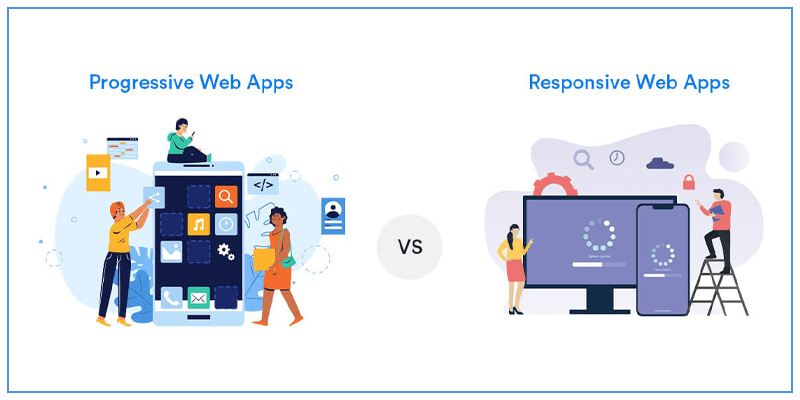Technology especially in smart phone applicationsis making strides in providing the best experiences in our day-to-day activities. Smartphones have become an intrinsic part of our lives without which it is impossible to step out of our homes. From ordering food to makepayment,the dependency on mobile phones is overwhelming. As such, the need for creating unique and better mobile applications has become a challenge for mobile application developers.
The mobile app technology has a come long way from running only on specific devices to those that are compatible with all platforms. The case with progressive and responsive app is no different that are now being widely used apps by businesses. Both progressive and responsive web apps have their own merits and demerits so choosing one or the other might be challenging for your business requirements.
Features of Progressive Web Apps Vs Responsive Web Apps
Therefore, it is important to know which one is better for your business needs.The following below mentioned features of progressive and responsive web apps would help you in choosing the web app for your business-
- Speed
When it comes to speed – Progressive Web App (PWA) wins the battle over Responsive Web App (RWA). PWA loads much faster on all devices allowing you to enhance the effectiveness of your mobile apps. PWAs are compatible with old browsers with features such as push notifications, offline support, and native audio and video capturing features.
- Cost efficiency
Responsive Web Apps are cost efficient when compared to PWAs, as they are capable of adapting to different screen devices using single coding. Progressive web development apps needs to be developed using multiple languages such as HTML 5, CSS or JavaScript each for specific screens that makes PWAs much expensive. However, its features like high speed, native like experience balances for the added cost.
- Work Offline
Responsive web apps are not capable of working offline whereas PWAs can store large amounts of data offline. Working offline results in reducing the buffering time as much as by 50% allowing the users to surf through the catalogue on offline mode using PWA.
- User experience
Progressive Web Applications tops the list in delivering quality UX that enables the websites to look rich in looks. PWAs can run on multiple platforms unlike native apps that are capable of running on specific platforms like Android or iOS. PWAs bridge the gap between the hybrid and native apps with suitability for multiple platforms and features like offline storage, location access, SMS/MMS capability etc. Responsive Web Apps lacks native like experience even though, they have the ability to adapt to unique screen sizes of different devices.
- SEO & SEM
Both the PWA and RWAs are suitable for SEO and SEM as they allow the web crawling by search enginesand in utilizing keywords in website content.
- Accessibility
Progressive Web Apps stands ahead when it comes to accessibility. PWAs can be easily saved on your smartphone’s website homepage ensuring easy accessibility. The user is not required to search for the homepage in the browser every time. PWA instantly launches the full screen mode when the user clicks the app icon from the list of apps on the home screen.
Final Note-
Finally, it can be concluded that businesses should observe the pros and cons of both Progressive Web Apps and Responsive Web Apps before implementing them as per their business requirements. For instance, a startup with limited funds may choose RWA before investing a huge amount into app development.



























